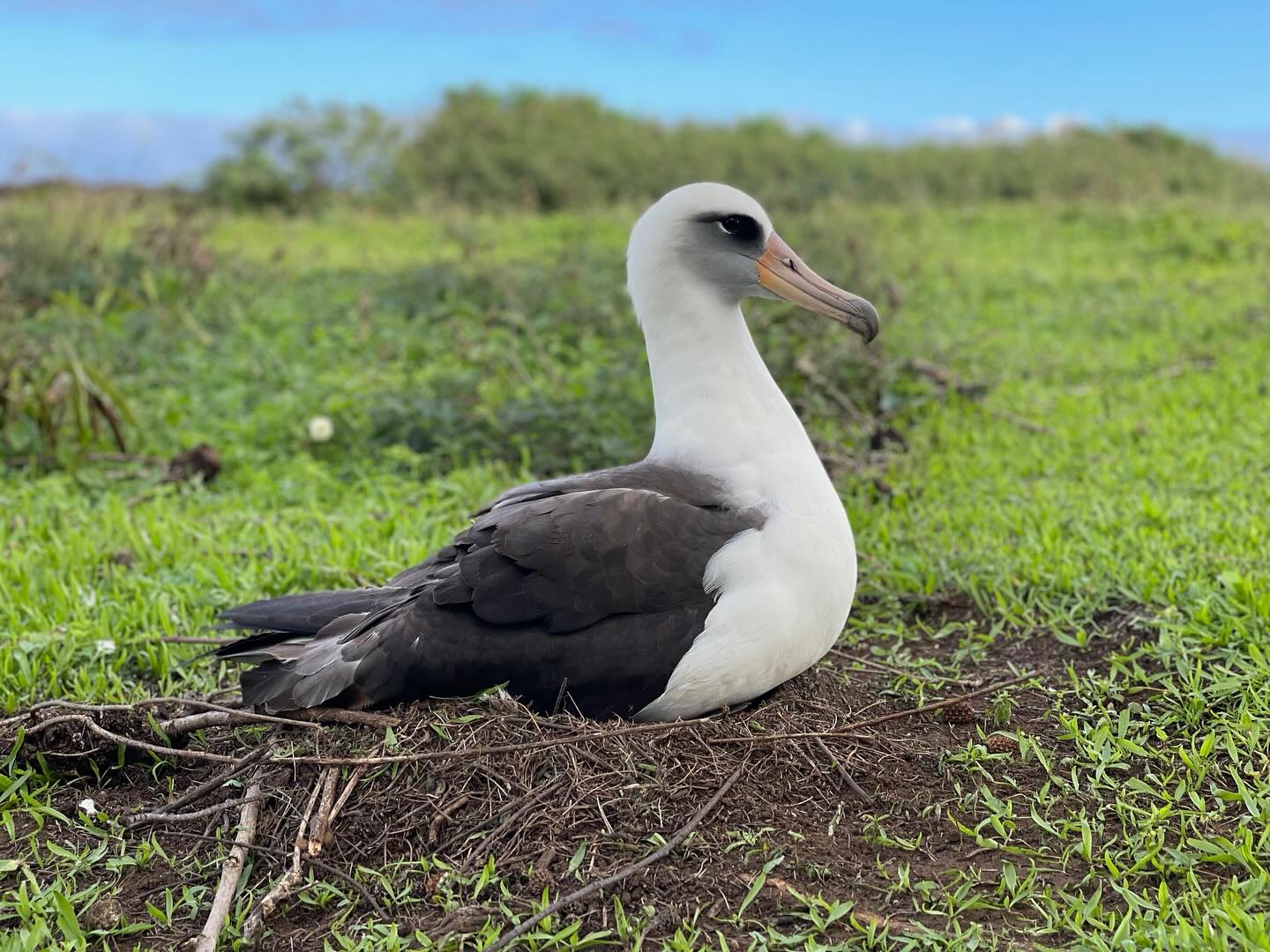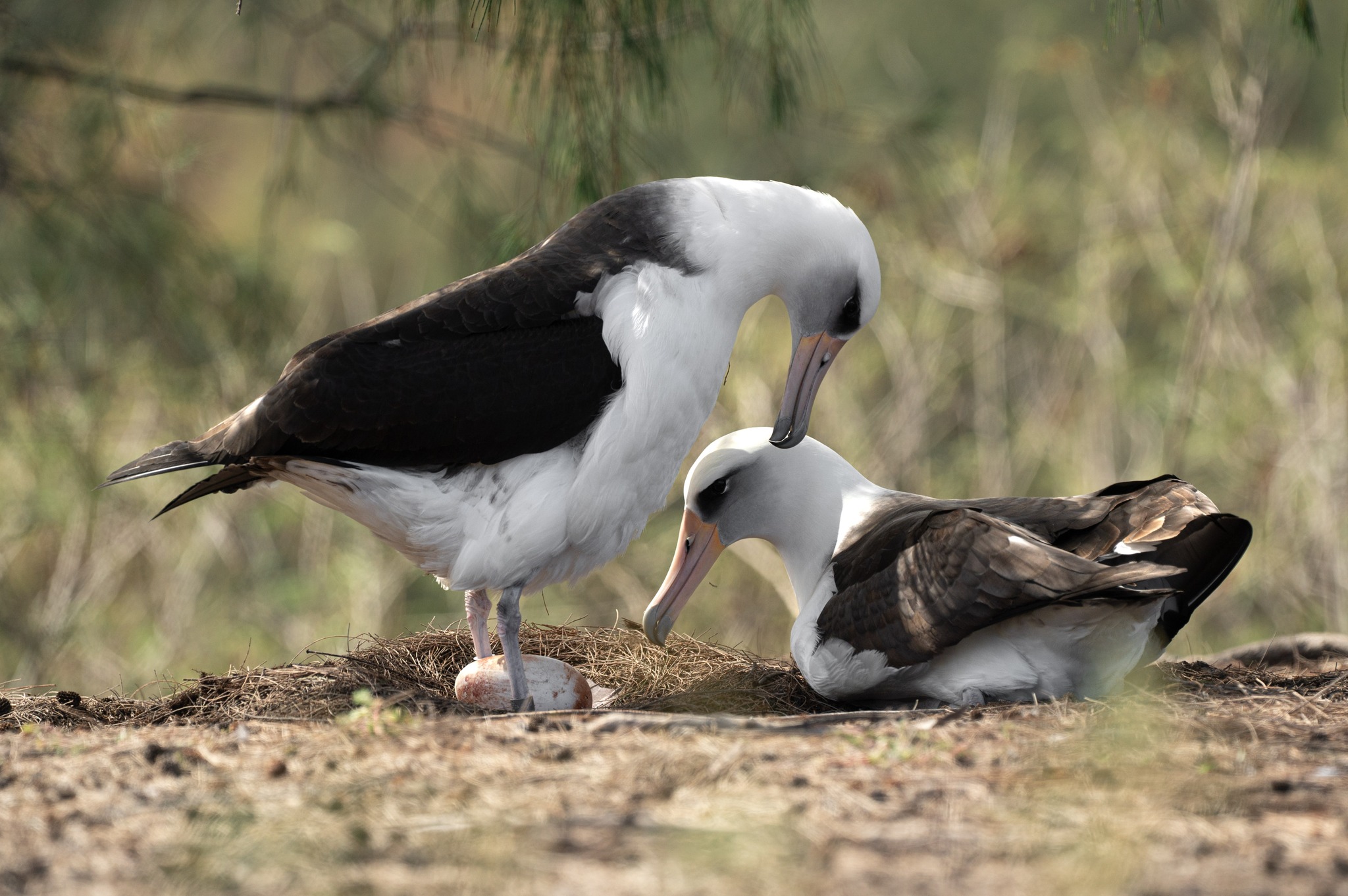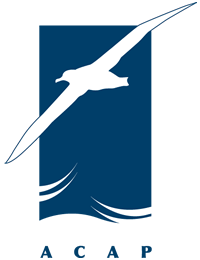
A Laysan Albatross incubates within the Kilauea Point National Wildlife Refuge in the current 2024/25 breeding season, photograph from the Friends of Kauai Wildlife Refuges
UPDATE: The final total for the 2024/25 breeding season was 44 fertile Laysan Albatross eggs given.to birds elsewhere on Kauai that had infertile eggs for a translocation programme that commenced in 2005, according to Brooke Mcfarland, Natural Resources Manager, Pacific Missile Range Facility.
As of 12 December, 27 fertile Laysan Albatross or Mōlī Phoebastria immutabilis eggs from occupied nests in the Pacific Missile Range Facility had been successfully swapped with infertile eggs (often laid by female-female pairs) on the Hawaiian island of Kauai. "The Pacific Missile Range Facility on the west side of Kauai [is] where nesting is dangerous for aircraft and albatross. Eggs there are confiscated, put into an incubator, candled for fertility and adopted out. Placed on both federal and private lands, the project means more than two dozen additional chicks may fledge from the island in the current breeding season”. Information from the Facbook page of Hob Osterlund. Watch a video of candling an egg in the field to test for viability here.
Egg swaps have been a regular activity on Kauai for some years (click here).
 A Laysan Albatross pair inspects their egg within the Kilauea Point National Wildlife Refuge in the current 2024/25 breeding season, photograph from the Kilauea Point Wildlife Reserve
A Laysan Albatross pair inspects their egg within the Kilauea Point National Wildlife Refuge in the current 2024/25 breeding season, photograph from the Kilauea Point Wildlife Reserve
Within the Kilauea Point National Wildlife Refuge on Kauai, the Facebook page of the Friends of the Kaua'i National Wildlife Refuges reports that 151 Laysan Albatross occupied nests have been counted within two breeding colonies. These birds now breed behind predator-proof fencing. In the previous (2023/24) breeding season the 158 eggs counted constituted a record number (click here). A more recent total is given as 153, An article by Hob Osterlund adds "We have an estimated 388 nests [for Kauai], a first-place photo finish with [2017/18], when there were 392 nests. Of those, thirty-nine percent (153 nests) are on US Fish and Wildlife Service (USFWS) federal land at Kīlauea Point National Wildlife Refuge. Sixty-one percent (235 nests) are on private lands. Private land colony sizes vary from as few as one nest to as many as 63 nests".
With thanks to Brooke Mcfarland and Hob Osterlund.
John Cooper, Emeritus Information Officer, Agreement on the Conservation of Albatrosses and Petrels, 08 January 2025, updated 09 January 2025

 English
English  Français
Français  Español
Español